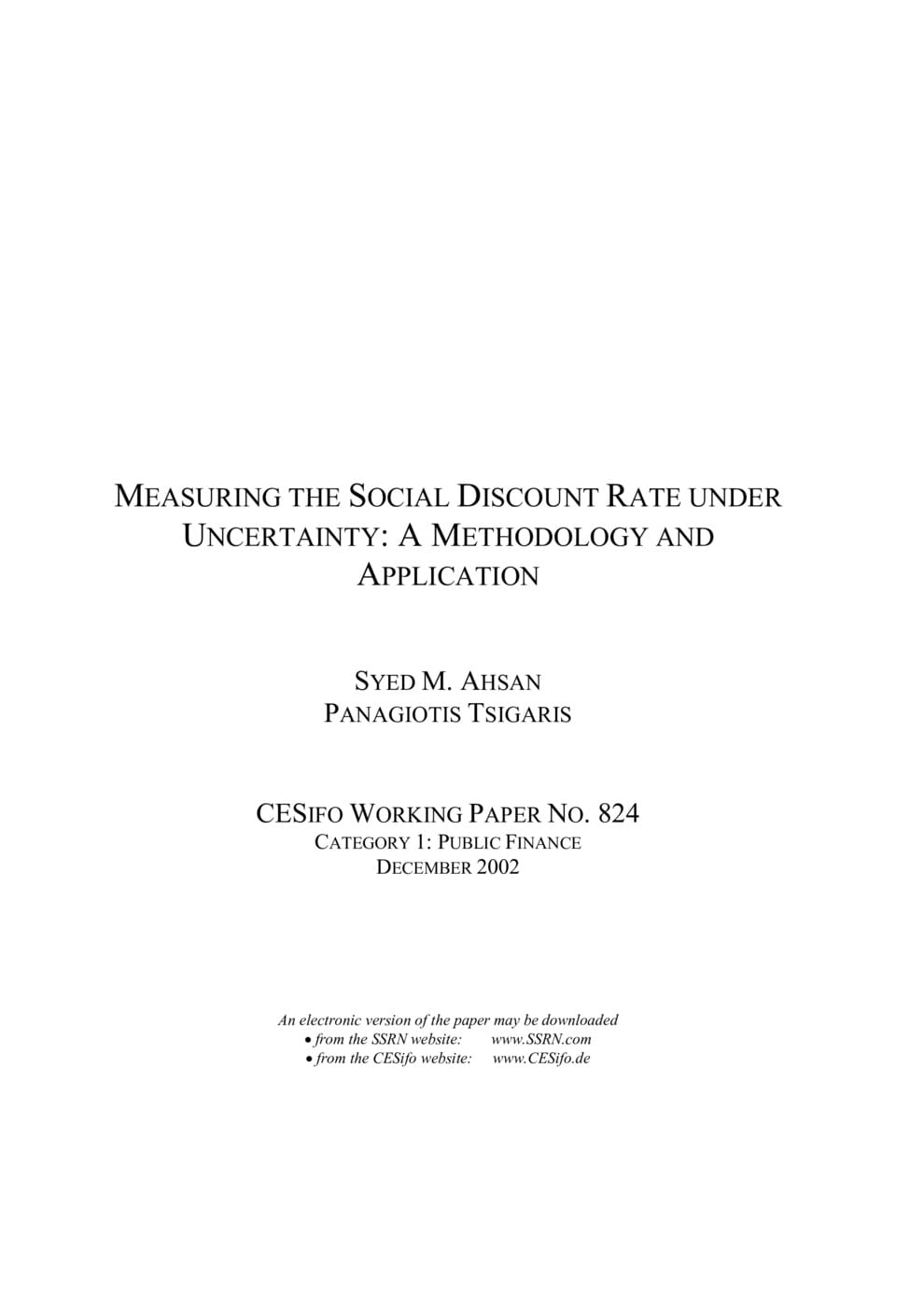Measuring the Social Discount Rate under Uncertainty: A Methodology and Application
CESifo, Munich, 2002
CESifo Working Paper No. 824

It is well recognised that the issue of the social rate of discount applies only to the gains from public investment that accrues to the public sector. When it comes to measurement, however, there is a problem: public investment in infrastructure and the like do not usually yield direct pecuniary returns to the public exchequer. Instead public capital may be plausibly argued to lead to increases in factor productivity in the private economy. This paper observes that government typically shares in the latter gains via the collection of tax revenues. Hence to the extent the risk discount rate should reflect the co-variability between the return from public investment and that of the market, we are led to measuring the risk premium implicit in various revenue flows. We apply the above methodology to the United States budget data for the period, 1950-2000, and show that the social risk premium is relatively small vis-à-vis the market. Consequently, the use of the risk free rate as the correct risk discount rate for public sector investment would involve only a minor error. The intuition here is that the portfolio of assets embedded in the state’s revenue claims provides additional diversification than is available through financial markets. Therefore, even investors holding well-diversified stock portfolios may legitimately view claims on state revenue as vehicles for further risk shifting.